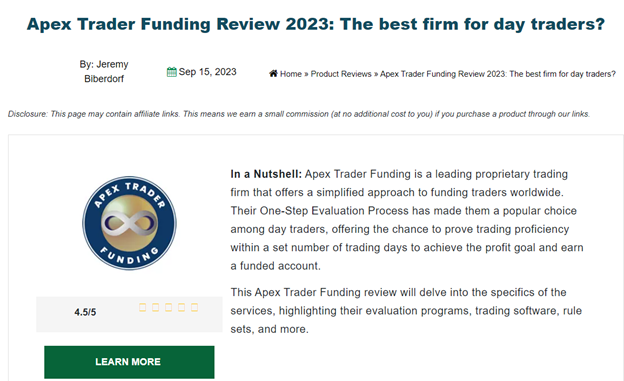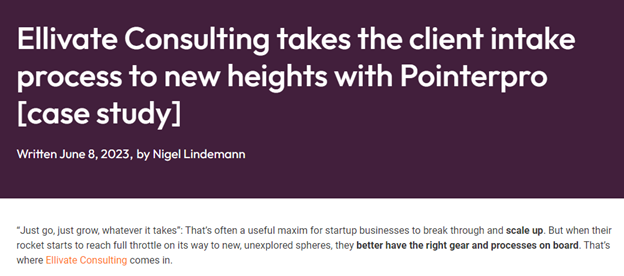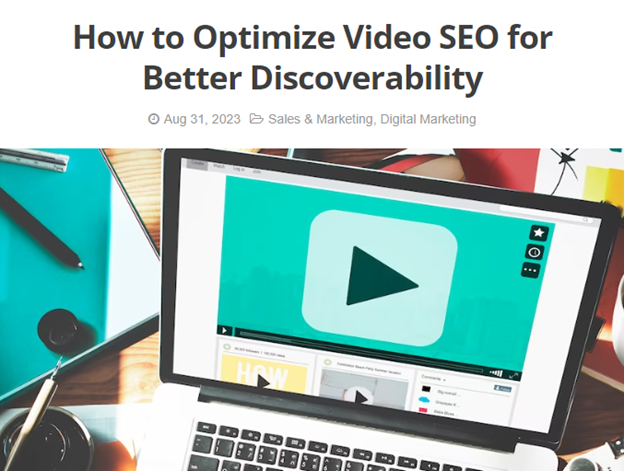Are you looking to bring more traffic to your website?
Creating the right content is key to attracting more visitors to your site.
One way to do this is by writing different types of blog posts that are proven to be the most engaging for your audience.
This article will discuss six kinds of articles you can use for this purpose.
Listicles
Listicles are articles presented in a list format, and they have become increasingly popular over the years.
They are easy to read and visually appealing, making them a great way to attract readers.
People are often drawn to listicles because they know exactly what to expect from the content, and it's usually quick and informative.
Follow these tips for creating a successful listicle:
- Choose a compelling topic. Your topic should be something that your target audience is interested in. It could be a trending or controversial topic.
- Use numbers. Since it's all about lists, make sure to use numbers in your title and throughout the article. Numbers make the content more scannable and easier to read.
- Keep it concise. People are drawn to listicles because they provide quick and digestible information. Keep your paragraphs short and to the point, and use bullet points or subheadings for each item on your list.
- Use images or videos. Adding visuals to make the content more appealing and break up the text. Use high-quality images or short videos that are relevant to the subject.
- Make it shareable. Listicles have a high potential for social sharing, so make sure to include social media buttons or links at the end of your post. You can also ask readers to leave their thoughts or opinions in the comments section.
Here's an example of a successful listicle:

In this post, you can find the most interesting SEO statistics, with data, screenshots, and useful comments.
Reviews
Reviews are powerful tools for driving traffic to your website because people love hearing about other's experiences with products or services.
They act as social proof and can influence a potential customer's decision to purchase.
Here are some tips for writing effective reviews:
- Be honest. Your review should be based on your genuine experience with the product or service. Don't exaggerate or make false claims.
- Include images or videos. People are more likely to engage with your review if it includes visuals. Pictures or videos can help showcase the product or service and make your review more compelling.
- Provide details. Be specific about what you liked and didn't like about the product or service. This will give readers a better understanding of your experience and help them make an informed decision.
- Include affiliate links (if applicable). If you are an affiliate for the product or service, make sure to include your unique affiliate link in the review. This can help drive traffic and potentially earn you some commission.
Here's an example of a successful review:

This comprehensive review by ModestMoney about Apex Trading Funding discusses the pros and cons, features, and overall experience with the platform.
Case Studies
Case studies are real-life examples that showcase the success or impact of a product or service. They are highly effective in driving traffic because they provide evidence and credibility to your claims.
Here's how to create a successful case study:
- Choose a relevant topic. Your case study should be related to your niche and target audience. It could be about the success of a specific strategy, tool, or case study.
- Include data and statistics. People are drawn to facts and figures, so make sure to include relevant data in your case study. This can help add credibility to your claims.
- Share specific results. Be transparent about the results of your case study, whether they are positive or negative. This will give readers a realistic idea of what to expect.
- Include visuals. As with all types of blog posts, visuals are crucial for keeping readers engaged. Use images, charts, or graphs to visualize the results and make the content more appealing.
- Make it easy to read. Case studies can be detailed and technical, so make sure to break up the text using headings, bullet points, and short paragraphs.
Here's an example of a successful case study:

This case study by PointerPro discusses how their software helped a consulting firm streamline its client intake process, resulting in increased efficiency and revenue.
Infographics
Infographics are visual representations of information or data. They are highly shareable and can bring in a lot of traffic to your website.
Here's how to create a successful infographic:
- Choose an interesting topic. Infographics should be visually appealing but also provide valuable information to your target audience. Choose among infographic trends or interesting topics that are relevant and interesting.
- Organize the information logically. Make sure the content flows in a logical order so readers can easily follow along. Use headings and subheadings to break up the information.
- Use visuals wisely. The main attraction of an infographic is its visuals, so make sure to use them wisely. Use graphs, charts, icons, and images to enhance the information and make it more appealing.
- Include sources/references. If you are presenting data or statistics in your infographic, make sure to include the sources or references at the bottom. This will add credibility to your content.
- Make it easy to share. Include social media buttons or links at the bottom of your infographic so readers can easily share it on their own platforms.
Here's an example of a successful infographic:

This infographic by HostPapa breaks down the process of planning a website design into easy-to-follow steps, using visuals and statistics to make it more engaging.
Interviews
Interviews are great for driving traffic because they offer valuable insights from experts or influencers in your niche. They can also help build relationships and connections with other professionals in your industry.
Here's how to conduct a successful interview:
- Choose the right person. Make sure the person you're interviewing is relevant and interesting to your target audience. Consider their expertise, experience, and influence in the industry.
- Prepare thoughtful questions. Do some research on the person you're interviewing and come up with thoughtful questions that will provide valuable insights for your audience.
- Record or transcribe the interview. You can either record the interview or transcribe it after it's done. This will make it easier to create an engaging post afterward.
- Add context and visuals. Introduce the interviewee, provide some background information, and add visuals such as images or videos to make the post more appealing.
Here's an example of a successful interview:

This in-depth interview by SEJ with CEO Jenise Uehara about implementing a four-day workweek discusses the challenges, benefits, and lessons learned from this strategy. Interviews are a great way to provide valuable insights and build connections within your industry.
How-to Guides
How-to guides are practical and informative posts that provide step-by-step instructions on how to accomplish a specific task or goal. They can be highly valuable for readers and bring in a lot of traffic to your website.
Here's how to create a successful how-to guide:
- Choose a relevant topic. Make sure the topic is something your target audience would be interested in and that relates to your niche.
- Break it down into steps. Break down the process into clear and concise steps that are easy for readers to follow.
- Include visuals or videos. Visual aids such as images, screenshots, or videos can make the instructions more understandable and appealing.
- Be thorough but concise. Make sure to provide all the necessary information and details, but keep the guide concise and avoid unnecessary fluff.
- Include tips and troubleshooting. To make your how-to guide more valuable, include tips or troubleshooting advice for common problems readers may encounter.
Here's an example of a successful how-to guide:

In this guide by Zumvu, they break down the process of optimizing video SEO into easy-to-follow steps with visuals and tips for improving search ranking.
Conclusion
Creating different types of blog posts can help bring in traffic to your website and keep readers engaged. Case studies, infographics, interviews, and how-to guides are just a few examples of successful posts you can create. Make sure to choose topics that appeal to your target audience, organize the information logically, use visuals effectively, and end with a call to action. With these tips in mind, you can create engaging and valuable content that will drive traffic to your website.













